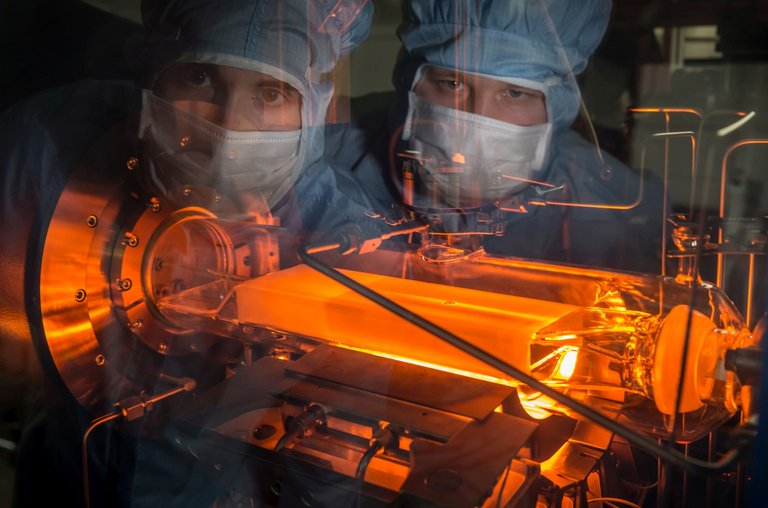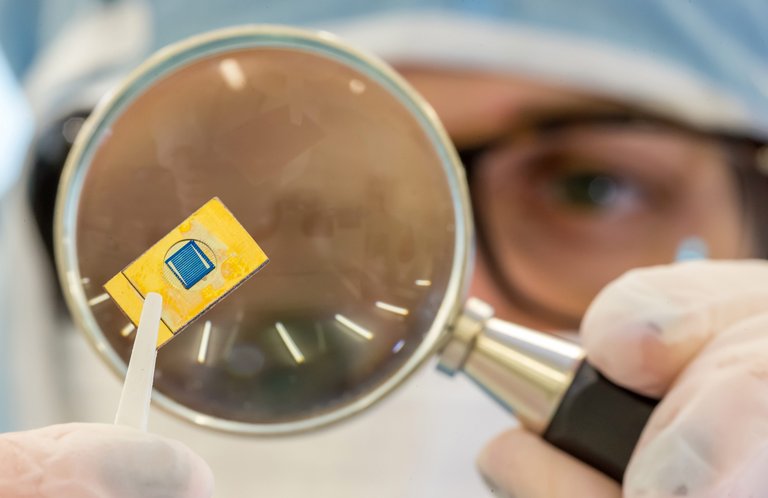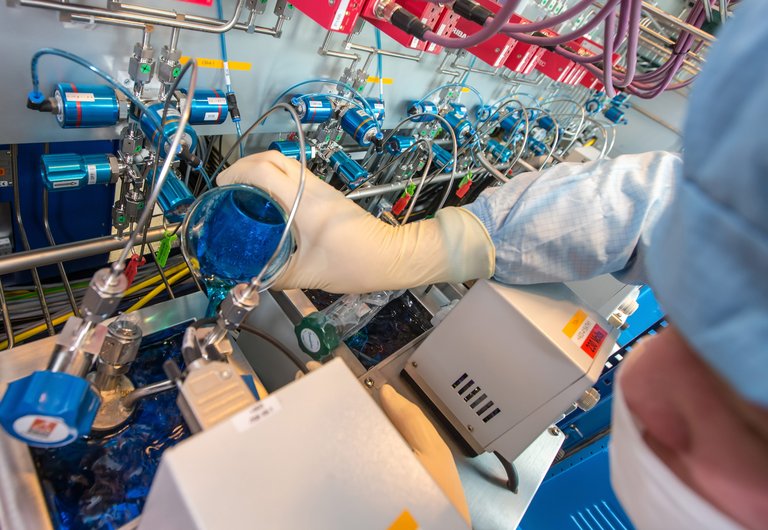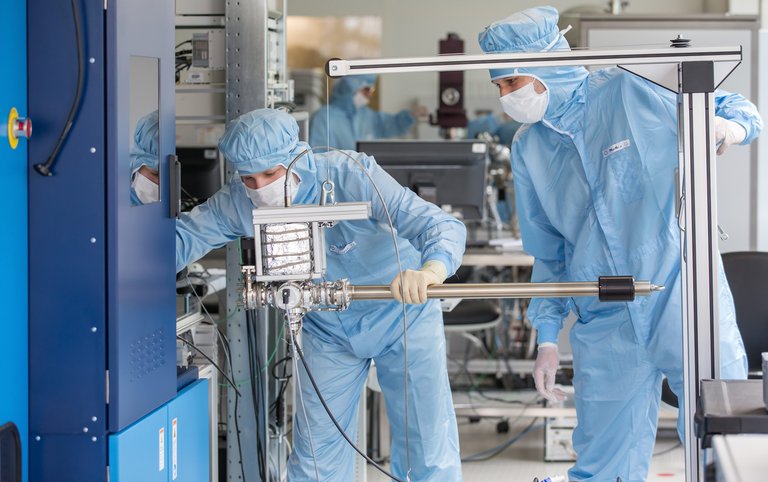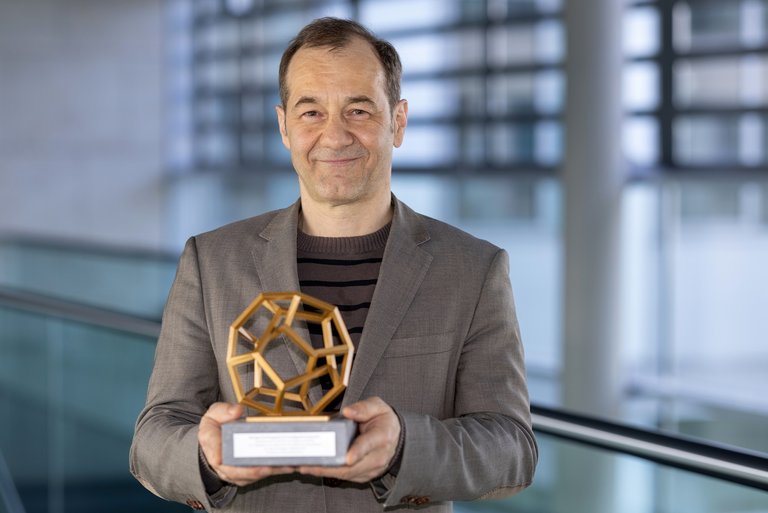Professor Thomas Hannappel from Technische Universität Ilmenau and his research team have won the Thuringia Research Award 2022 in the "Basic Research" category. With its research work, the team of scientists achieved significant progress in the development of semiconductor structures for the efficient use of solar energy to generate green hydrogen - possibly the renewable energy carrier of the future. The Thuringian Research Prize is awarded by the Free State of Thuringia in the categories "Basic Research" and "Applied Research" and is endowed with 25,000 euros each.
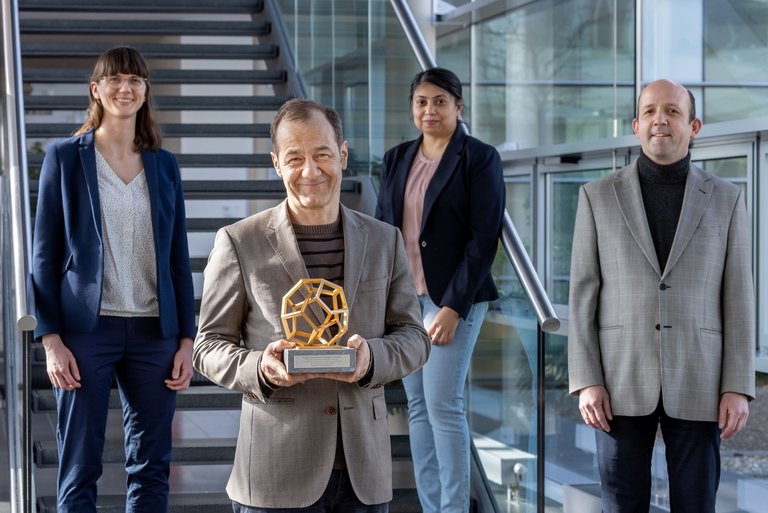
The international research team led by Prof. Thomas Hannappel, head of the Group of Fundamentals of Energy Materials at TU Ilmenau, succeeded in combining different types of semiconductors. This makes it possible, for example, to significantly increase the efficiency of conventional silicon solar cells. The integration of different semiconductors, the main component of solar cells or even microchips, promises significantly higher efficiency in the conversion of solar energy into hydrogen compared to conventional approaches - at low cost. With the help of so-called artificial leaves designed in this way, an efficiency of well over 20 percent could be achieved in the future for hydrogen production.
Such innovative semiconductor components are called artificial leaves because, just like the leaf of a tree, water is broken down directly into its components hydrogen and oxygen with the help of sunlight. Previously, Hannappel and his research team had succeeded in achieving an efficiency of 19 percent in direct solar water splitting to obtain hydrogen - even before the now award-winning research work on semiconductor crystal growth on low-cost silicon.
In his new work, Hannappel explored what are known as interfaces between silicon, the most important material in the semiconductor industry, and what are currently the most efficient semiconductors, III-V semiconductors. An interface is the area between two different substances or structures, such as the area between two immiscible liquids like oil and water. Analyzing and processing interfaces scientifically is extremely difficult - the Austrian Nobel Prize winner for physics Wolfgang Pauli once said: God created the volume of the solid, the devil created the surface. Processing interfaces is even more difficult when they are covered by other material, as in the case of the surfaces between silicon and III-V semiconductors. With the help of state-of-the-art in-situ spectroscopes, researchers at TU Ilmenau succeeded in optically illuminating and understanding the microscopic structure of the critical interfaces on an atomic scale - a unique selling point worldwide, especially since they combine this basic research method with concrete industrial manufacturing methods.
One step closer to independence from energy imports
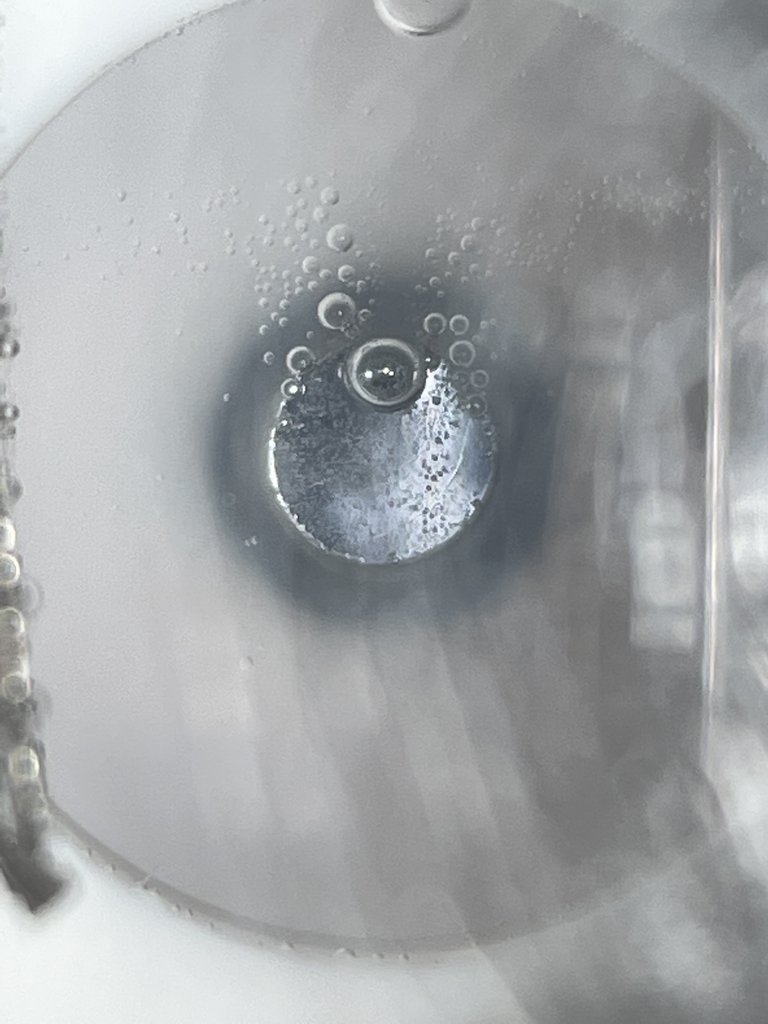
The Ilmenau research work enables new, high-quality semiconductor structures for regenerative energy generationwith thebest prospects for high efficiency and cost-effectiveness. In the photovoltaic industry, a tandem of silicon and III-V semiconductors can be used in high-tech devices for the highly efficient conversion of solar energy into hydrogen and thus into low-cost electricity. In addition, such a device can also be used to decompose water into hydrogen and oxygen gas with the help of sunlight. In this context, hydrogen is considered to be a decisive building block for a stable, secure and cost-effective electricity energy supply in Germany.
The achievements of the Ilmenau research team in favor of efficient power generation are all the more significant in view of the current discussion about making the energy industry in Germany independent of imports. The semiconductor industry is increasingly becoming a key industry worldwide - and successfully combining the semiconductors silicon and III-V semiconductors is regarded as a breakthrough technology.The successful integration of the currently most powerful semiconductors, the III-V semiconductors, with silicon, the most proven semiconductor to date, would not only drastically increase the efficiency in photovoltaics compared to current technologies, but would also make the provision of electrical power significantly cheaper. And in the future, this semiconductor combination could even be used to convert the greenhouse gas carbon dioxide into high-quality fuels.
The prize-winning scientists led by Prof. Thomas Hannappel are already working together with other energy researchers at TU Ilmenau on a large-scale project designed to help make Germany's energy supply stable, secure and cost-effective in the future. Together with renowned universities and research institutions, they are preparing a project to develop efficient, competitive artificial blades for the regenerative production of green hydrogen.
In awarding the Thuringian Research Prize to Prof. Hannappel's team, the President of TU Ilmenau, Prof. Kai-Uwe Sattler, recognizes that the outstanding energy research at TU Ilmenau and its worldwide networking is also being noticed by the outside world: "I warmly congratulate Prof. Hannappel and his team on receiving the most important research prize in Thuringia. The award proves that our university is making a concrete contribution to basic research in energy production. It is also an incentive to intensify the research work and thus also contribute to the turnaround towards regenerative energies."
[Translate to English:]
Contact
Prof. Thomas Hannappel
Head of Group Fundamentals of Energy Materials


